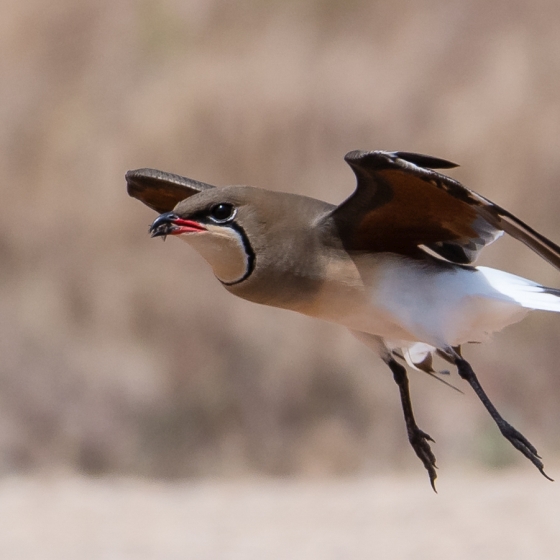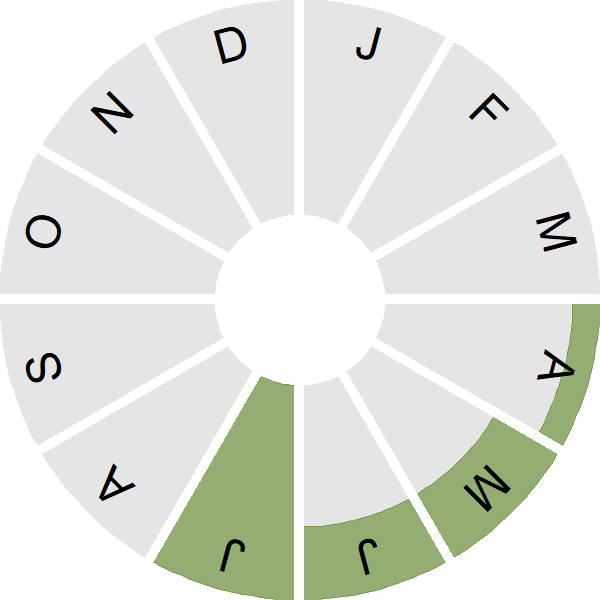Collared Pratincole

Introduction
A scarce but annual visitor from southern Europe.
Habitat loss, agricultural intensification, and disturbance appear to be reducing numbers within the Collared Pratincole's breeding range, one consequence of which is decreasing numbers of individuals reaching our shores.

Key Stats
Status and Trends
Conservation Status
Population Size
Population Change
Population trends of this scarce species are not routinely monitored.
Distribution
This species is a rare vagrant and was recorded during Bird Atlas 2007–11 as shown on the map.
or view it on Bird Atlas Mapstore.
European Distribution Map
Distribution Change
This vagrant is too rarely reported to map distribution change.
Seasonality
Collared Pratincole is a rare vagrant, usually recorded in spring and early summer.
Weekly pattern of occurrence
The graph shows when the species is present in the UK, with taller bars indicating a higher likelihood of encountering the species in appropriate regions and habitats.

Movement
Britain & Ireland movement
Biology
Survival and Longevity
Survival is shown as the proportion of birds surviving from one year to the next and is derived from bird ringing data. It can also be used to estimate how long birds typically live.
Classification, names and codes
Classification and Codes
- Order: Charadriiformes
- Family: Glareolidae
- Scientific name: Glareola pratincola
- Authority: Linnaeus, 1766
- BTO 2-letter code: KM
- BTO 5-letter code: COLPR
- Euring code number: 4650
Alternate species names
- Catalan: perdiu de mar europea
- Czech: ouhorlík stepní
- Danish: Rødvinget Braksvale
- Dutch: Vorkstaartplevier
- Estonian: kõnnu-pääsujooksur
- Finnish: pääskykahlaaja
- French: Glaréole à collier
- German: Rotflügel-Brachschwalbe
- Hungarian: székicsér
- Icelandic: Þernutrítill
- Irish: Pratancól Muinceach
- Italian: Pernice di mare
- Latvian: brunsparnu bezdeligtartinš
- Lithuanian: pievine kregždune
- Norwegian: Brakksvale
- Polish: zwirowiec lakowy
- Portuguese: perdiz-do-mar
- Slovak: prieložník stepný
- Slovenian: rjava komatna tekica
- Spanish: Canastera común
- Swedish: rödvingad vadarsvala
- Welsh: Cwtiad-wennol Dorchog

